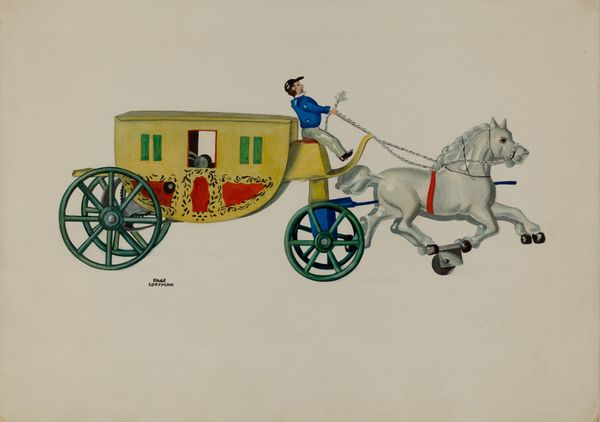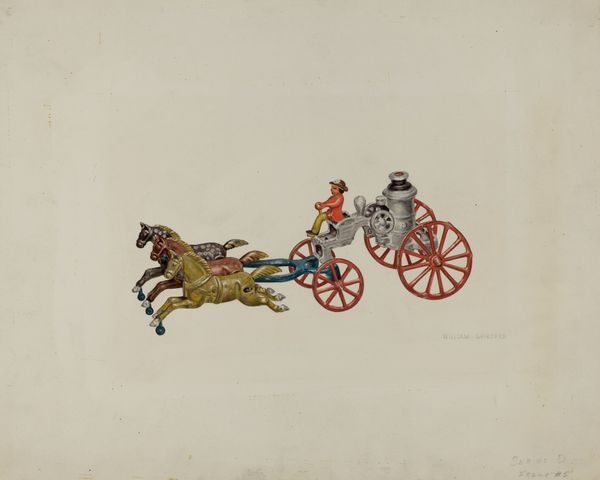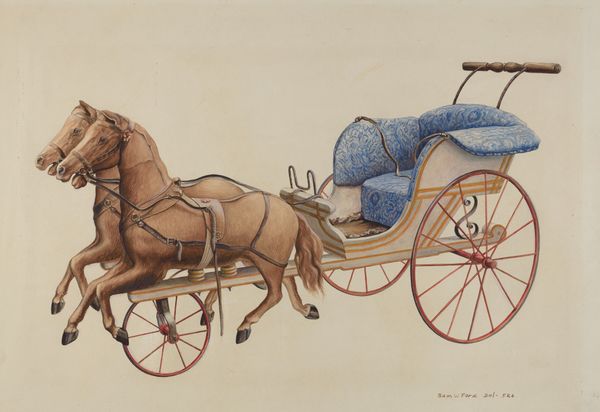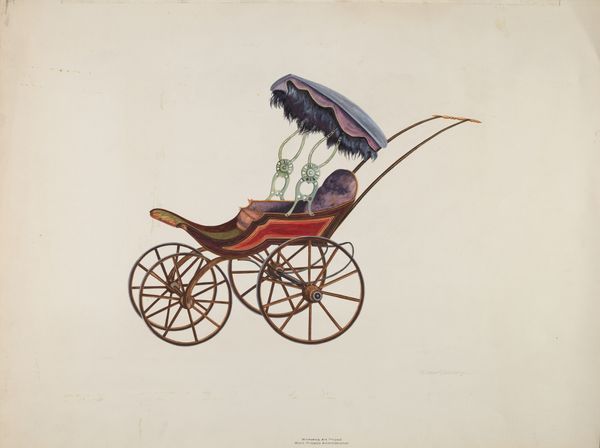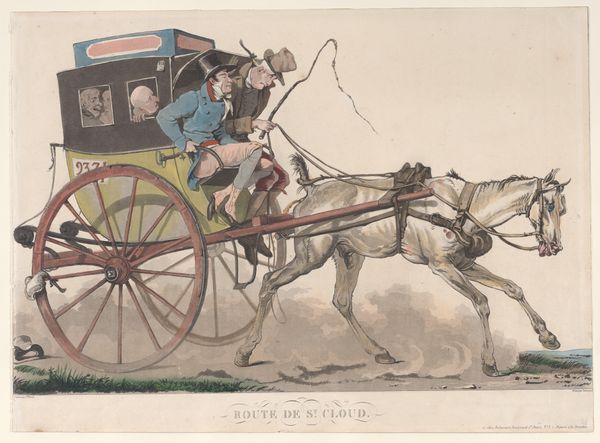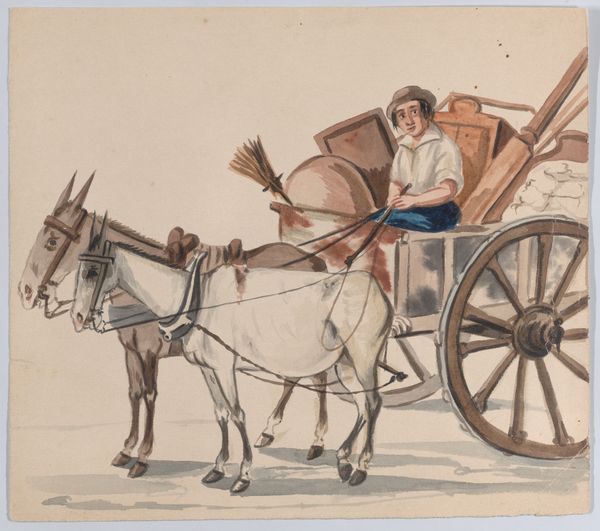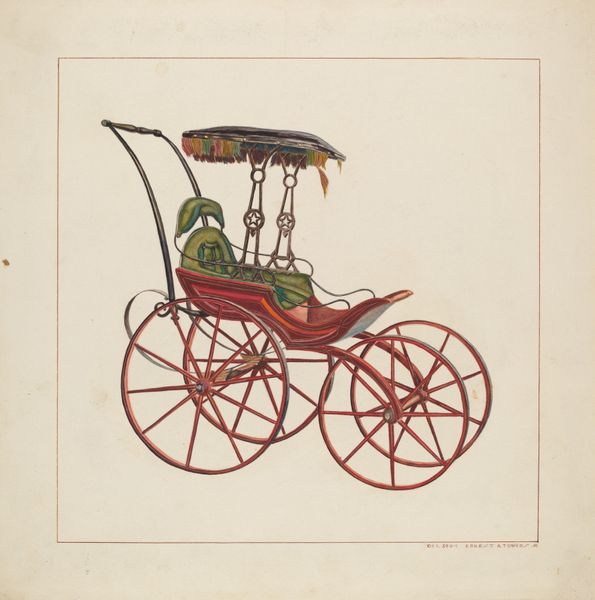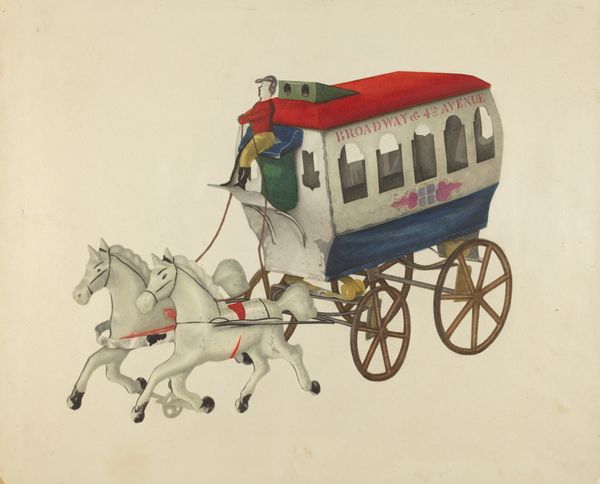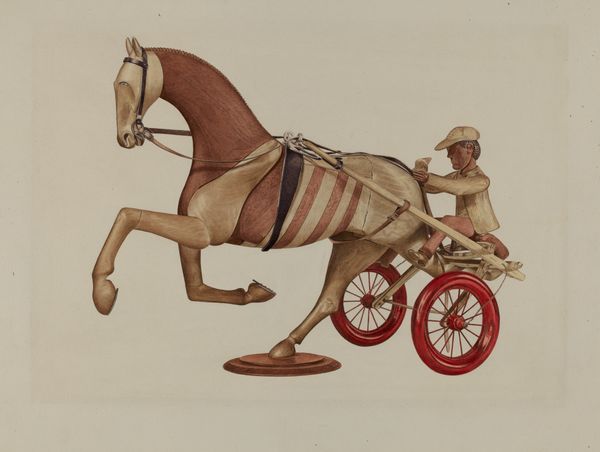
drawing, watercolor
#
drawing
#
watercolor
#
coloured pencil
#
watercolour illustration
Dimensions: overall: 30.7 x 40.7 cm (12 1/16 x 16 in.) Original IAD Object: 15 1/4" long
Copyright: National Gallery of Art: CC0 1.0
John Hall made this watercolor painting, "Calash and Horses," sometime in the late 18th century. At first glance, it's a charming image of a child's toy, a miniature carriage pulled by two horses. But it also offers a glimpse into the social and economic structures of Britain at the time. Hall was a historical engraver, appointed historical engraver to King George III in 1789, and this painting is likely a preparatory sketch for a print. The toy itself speaks to the burgeoning consumer culture of the era, where even children of wealthy families had access to luxury goods, reflecting the opulence and privilege of the aristocracy. The calash, a light, low-wheeled carriage, was a fashionable status symbol for ladies of leisure. To fully understand this image, we might explore sources like period toy catalogs, estate inventories, and social histories of the British upper class. In doing so, we can begin to reveal the complex social and cultural meanings embedded within this seemingly simple representation of a child's toy.
Comments
No comments
Be the first to comment and join the conversation on the ultimate creative platform.
